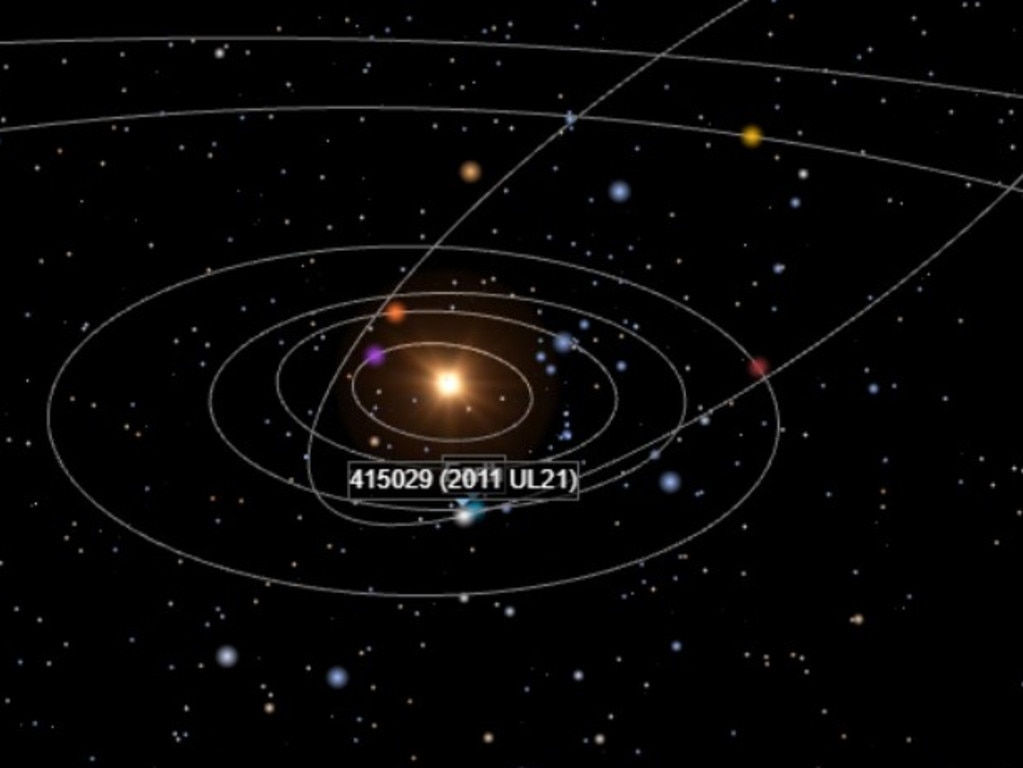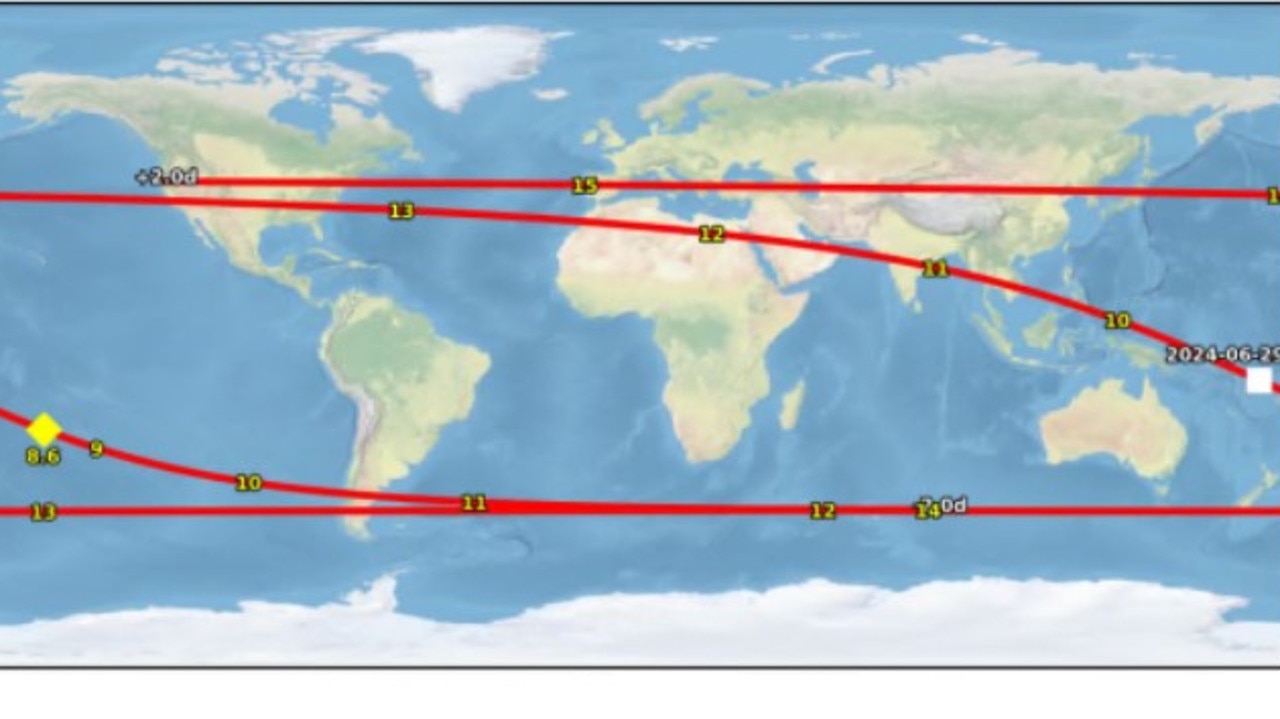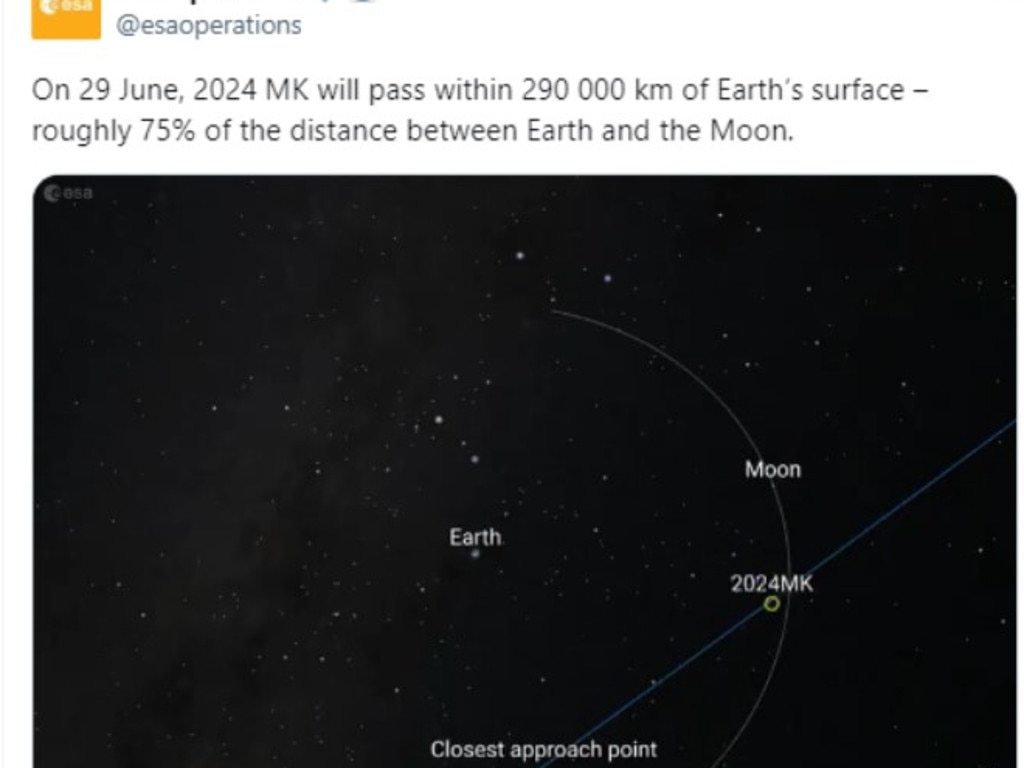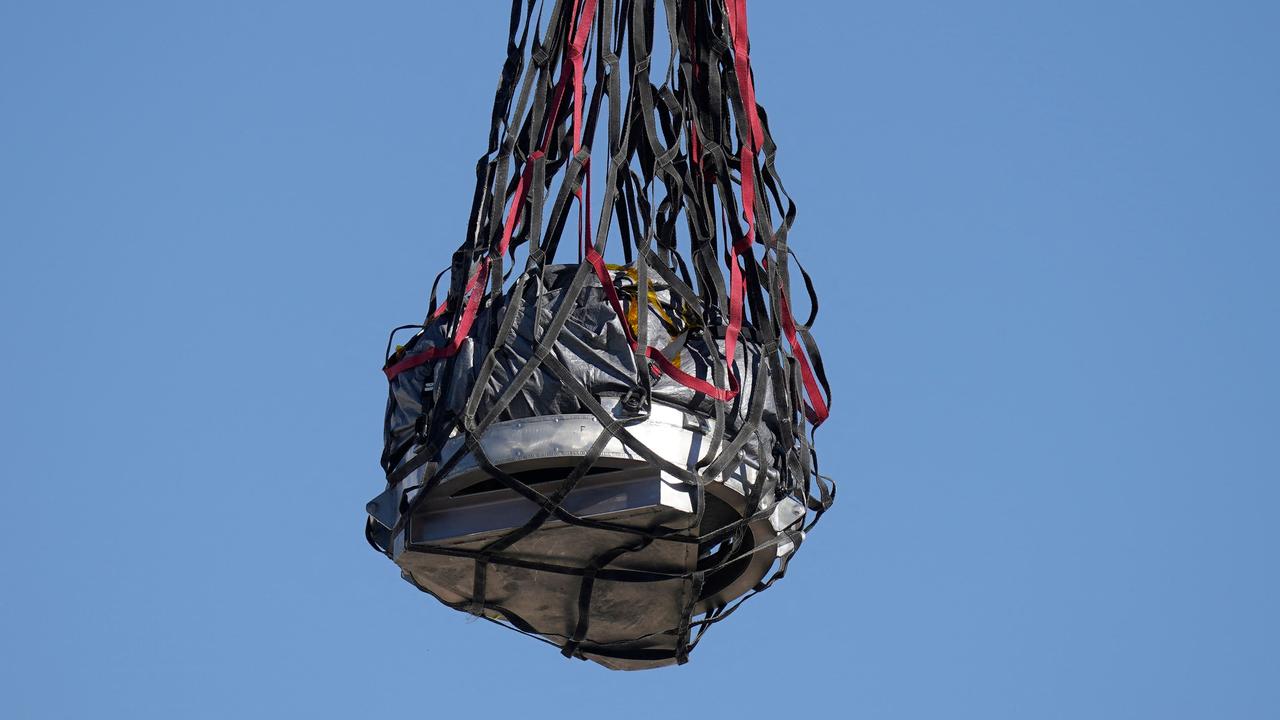‘Planet Killer’ asteroid will be one of the closest asteroids to plunge past planet Earth this year
An asteroid the size of Mount Everest is currently hurtling towards Earth, and is due to be one of the closest calls this year.
Having a celebrity drop in to help commemorate an event isn’t unusual. But what if that event was the Tunguska explosion that flattened 2200 sqkm of Siberia in 1908? And the “celebrity” is a 2.3km Planet Killer asteroid?
The United Nations has designated June 30 as International Asteroid Day.
That’s the date of the Tunguska Event – the largest observed strike in recorded history. The idea is to raise public awareness of the asteroid impact hazard.
But two uninvited guests are determined to help celebrate its 8th incarnation this year.
One is designated 415029 (2011 UL21). It’s the size of Mount Everest.

And this official public health hazard will be one of the closest asteroids to plunge past planet Earth this year.

The other is an unexpected arrival.
It was only discovered only a week ago.
It’s called 2024 MK. It’s 150m across. And it will come closer to Earth than the Moon on June 29.

Planet Killer 2011 UL21 is moving at 25.9 kilometres a second (75.5 times the speed of sound). Studies of the amount of light it reflects as it spins every 2.7 hours indicate it is somewhere between 1.5 and 3.8 kilometres in diameter. The European Space Agency (ESA) pins it down further, saying it’s about 2.3km across.

Asteroid 2024 MK is moving at 9.37 km/s (27 times the speed of sound). Initial estimates judge it to be about 150m across.
The ESA warns the discovery of 2024 MK just days out from Earth “highlights the ongoing need to improve our ability to detect and monitor potentially hazardous near-Earth objects (NEOs)”.
The monster believed to have exterminated the dinosaurs 66 million years ago is estimated to have been some 10km wide.
In comparison, the space rock that devastated 80 million trees at Tunguska is believed to have been just 15m in diameter.
Cosmic pinball
A review was recently conducted into the orbits of all known asteroids to reassess the potential risk they posed to Earth.
“It’s good news,” University of Colorado Boulder researcher Oscar Fuentes-Muñoz told the Massachusetts Institute of Technology (MIT) Review.
“As far as we know, there’s no impact in the next 1000 years.”
Even a close encounter with asteroids the size of 2011 UL21 is considered a rare event.
One passes near enough to observe about once in a decade.
While officially classified as “mid-sized”, it’s still larger than 99 per cent of all known asteroids. And it is one of the 10 biggest asteroids observed passing within 7 million kilometres of the Earth over the past century.
As a result, the Bellatrix Astronomical Observatory in Ceccano, Italy, will be watching closely as 2011 UL21 passes its closest point shortly before dawn Friday Australian time. It will livestream the visual feed via The Virtual Telescope Project.

“This asteroid’s orbit around the sun is steeply inclined, which is unusual for such a large object. Most large objects in the solar system, including planets and asteroids, orbit the sun in or close to the equatorial plane,” an ESA statement reads.
“This could be the result of gravitational interactions with a large planet like Jupiter. Jupiter can deflect previously safe asteroids inwards towards Earth, so understanding this process is important.”
The elliptical, three-year (1130 day) orbit takes 2011 UL21 above the plane of the solar system out to between Mars and Jupiter. But its crossing point intersects the orbit of the Earth. And that prompted astronomers to classify it as both a Near Earth Asteroid (NEA) and a Potentially Hazardous Asteroid (PHA).
This Friday morning (Australian time), it will pass safely by at some 6.6 million kilometres. That’s more than 17 times the distance of the Earth from the Moon.
In 2089, that distance will be down to 2.7 million kilometres.
Unwanted visitors
Asteroid 2024 MK will be much closer. It will pass by on June 29 at 290,000km – roughly 70 per cent of the distance between the Earth and the Moon.
At 150m across, it’s well above the 20m astronomers have determined to pose a risk to the surface of the Earth. An impact would equate to more than 100 megatons of explosives and result in more than 1 million deaths.
Studies of impact craters and global debris deposits suggest our planet is hit by an asteroid larger than 1km roughly once every 600,000 years. That’s big enough to devastate an entire continent, kill hundreds of millions of people and cause a global climate crisis.

Astronomers estimate about 5 million objects over 20m in diameter potentially cross paths with the Earth. And predicting their pinball-like paths through space is made difficult by the poorly understood influence of Jupiter’s gravity.
That’s generally led astronomers not to calculate orbits beyond a century in advance.
But Fuentes-Muñoz and his colleagues last year sought to simplify the celestial mechanics by only considering gravitational influences that may tilt a 1km-diameter or more object towards Earth. This allowed them to peer much further into the future with some degree of confidence.
The greatest resulting threat?
A stony asteroid called 1994 PC1.
Calculations give it a 0.00151 per cent chance of coming closer to the Earth than the Moon within the next 1000 years. And that’s a 10 times higher chance than the next closest pass.
“It’s still not likely that it’s going to collide,” says Fuentes-Muñoz. “But it will be a very good scientific opportunity because it’s going to be a huge asteroid that’s very close to us.”
Planetary defence
“Right now, we don’t know of any asteroids of a substantial size that are going to hit the Earth for the next hundred years,” says NASA Planetary Defense Coordination Office delegate Terik Daly.
“But we also know that we don’t know where most of the asteroids are that are large enough to cause regional devastation.”
Last week, the agency revealed the results of the fifth Planetary Defense Interagency Tabletop Exercise.Held in April, it was designed “to inform and assess our ability as a nation to respond effectively to the threat of a potentially hazardous asteroid or comet,” a statement reads.
“We actually do need to discuss at this time what it would take for an international response on such a large scale,” adds US Federal Emergency Management Agency (FEMA) delegate Leviticus Lewis.

“We need to organise and start discussing what it would really take to co-ordinate a large effort,” Lewis said. “And who would be in charge? What organisation? How would we set it up? Would it be the UN? Would it be a combination of international organisations? How would we actually accomplish that? So, that’s the new challenge.”
Ground Zero – wherever it may be – must be established as early as possible. Only then can international-scale evacuations or interventions be contemplated.
“We’re going to have very large uncertainties in the asteroid’s properties, and that leads to very large uncertainties in what the consequences would be if it were to hit the ground, as well as large uncertainties in what it would take to stop that asteroid from hitting the ground,” warns Daly.
NASA plans to launch the Near-Earth Object Surveyor in 2027 for just such a purpose.
But Planetary Defense Officer Emeritus Lindley Johnson said the process of pinpointing these details – and constructing and launching an intercepting spacecraft – “eats up a decade of time pretty fast … So that is certainly a concern, looking at it from the technological standpoint.”
Jamie Seidel is a freelance writer | @JamieSeidel






